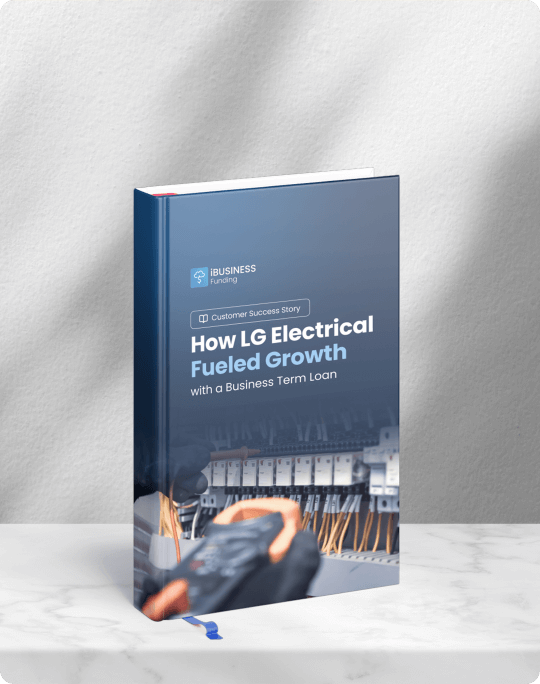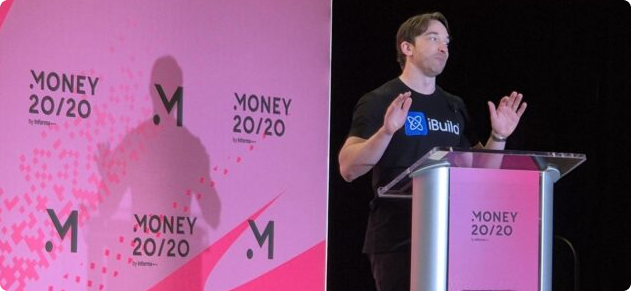
The Great Wealth Transfer: A Historic Opportunity for SBA Lenders
Introduction: Why This Matters Now
Over the next two decades, the U.S. is expected to undergo the largest transfer of wealth in history in what many are calling the Great Wealth Transfer. As Baby Boomers and members of the Silent Generation age, trillions of dollars in assets are expected to pass to younger generations.
While much of the attention has focused on stock portfolios and real estate, a significant portion of this wealth is tied up in privately held businesses. As these owners retire, they’re not just passing down capital. They’re handing off entire companies, complete with employees, operations, and decades of community goodwill.
For many, the exit is more than a transaction. Retiring owners are increasingly opting for phased transitions, mentorship arrangements, and consulting roles that allow them to guide new owners through the next chapter. This blend of continuity and innovation is driving a new wave of entrepreneurial activity, and SBA lenders are uniquely positioned to support it.
Purchasing an existing business often offers a faster, more secure path to ownership than starting from scratch. Buyers inherit customer relationships, operational systems, and proven financials, offering advantages that also make acquisition financing more viable for lenders. With SBA 7(a) loans playing a critical role in facilitating these transitions, and with recent updates to SBA lending guidelines in June 2025, this moment represents a historic opportunity for lenders to meet borrowers’ growing needs for acquisition funding while earning revenue from loans to established businesses.
The Wealth Transfer in Context
The financial media has widely acknowledged the scale and implications of this transition. According to the Federal Reserve, Baby Boomers and the Silent Generation control 64% of the nation's $190 trillion in wealth. Forbes notes that over $80 trillion is estimated to be passed on to younger generations by 2045.
This isn’t just a story about inheritance—it’s a story about business continuity. As owners retire or begin estate planning, a wave of small business transitions is underway. A 2024 report showed that 77% of business brokers anticipated a rise in buyer interest in 2025 compared to the previous year. This presents enormous potential for lenders who can support acquisition financing.
And while some owners are passing their businesses down to family, many are turning to outside buyers. As Fortune notes, Boomers are increasingly selling to enterprising Millennials instead of family heirs. This opens the door for first-time entrepreneurs, especially those with a clear plan and the right financing partner.
The role of Gen X and Millennials is central. Many are tapping into Entrepreneurship Through Acquisition (ETA) programs at business schools. These programs teach entrepreneurs how to raise capital, identify businesses to buy, and operate them post-acquisition, an increasingly popular alternative to launching startups.
According to BizBuySell, over 56% of current buyers are first-timers. Most are “corporate refugees”—people leaving corporate jobs for more control, financial independence, and better work-life balance. Others include serial entrepreneurs, recent MBAs, and even retirees. Many were inspired by family-owned businesses or educational exposure to ETA models.
SBA Loans as a Bridge Between Generations
This generational shift is precisely where SBA 7(a) loans shine. As the SBA’s flagship loan product, the 7(a) program is designed to facilitate business purchases, particularly for first-time owners. Its flexible terms and government backing make it attractive for both buyers and sellers.
For buyers, SBA 7(a) loans offer lower down payments, longer repayment periods, and the option to incorporate partial seller financing. For sellers, the structure of an SBA-backed deal often provides more certainty and liquidity, allowing for smoother successions.
These loans are increasingly used for third-party acquisitions as well as internal successions, such as when a long-time employee or family member buys out the founder. In either case, SBA financing ensures continuity, supports local economies, and enables the transfer of institutional knowledge.
Market Data: SBA Lending Trends in Business Acquisitions
The use of SBA 7(a) loans for business acquisitions is growing steadily. The volume and average size of these loans have increased, reflecting the higher valuations of established businesses being sold.
Acquisition Loans Are Large, and Getting Larger

From FY2021 to FY2025 Q2, SBA 7(a) loans used for change of ownership consistently averaged over $1.1 million per loan, nearly double the size of loans to new or younger businesses. In FY2025, the average loan size for a change of ownership reached nearly $1.12 million, with a total of 3,723 loans approved through Q2 and nearly $4.2 billion in capital deployed to help transition established businesses to new owners in just the first six months of FY2025.
The number of loans approved so far in FY2025 indicates loan counts are on trend to slightly exceed that of FY2024, but the average loan size has remained consistently high, demonstrating continued lender confidence in established business transitions.
Top Industries Reflect Buyer Priorities

Looking at the industries receiving the most acquisition financing, it’s clear that buyers are focused on dependable, community-rooted businesses:
- Full-service restaurants have remained the top category every year since FY2023, with 209 loans approved in FY2025 so far.
- Limited-service restaurants (e.g., fast food and fast casual) and beer, wine, and liquor stores round out the top three in FY2025.
- Hotels and motels ranked in the number one spot in FY2021 and FY2022, though shifting interest in FY2023-FY2025 could reflect evolving buyer risk tolerance or macroeconomic conditions.
These businesses are attractive not only because of their local economic role but also because they offer stable cash flow and recession-resilient demand—making them excellent candidates for SBA-backed ownership transitions.
Corporations Dominate, But Individuals Are Entering the Market

The majority of SBA acquisition loans from FY2021 to FY2025 Q2 were made to corporations. However, individuals and partnerships still play a meaningful role, especially in smaller acquisitions. As of FY2025 Q2, corporations have received 3,645 loans totaling $4.06 billion.
This reflects the professionalization of the acquisition space. Many buyers are forming business entities, raising capital, and using structured approaches like search funds to pursue ownership.
Strong Payback Rates Underscore Loan Viability

Acquisition loans also show strong repayment outcomes. From FY2021 to FY2025 Q2, more than 2,500 loans were paid in full, while only 111 have been charged off.
This repayment performance, combined with the SBA’s guarantee, makes acquisition loans not only high-impact but relatively low-risk for lenders, particularly when supported by sound underwriting and strong borrower education.
The June 2025 SBA SOP updates introduced significant changes that directly impact acquisition lending. Most notably, buyers are now required to inject at least 10% equity into the deal, and seller financing can only count toward half of that amount if it’s on full standby for the life of the loan. This increases the upfront cash needed to close a deal and limits flexibility for sellers, but it also helps ensure buyers are financially committed and deals are more stable over the long term. Partial asset purchases are no longer allowed when the seller retains equity; such deals must now be structured as stock purchases. Additionally, any seller who retains ownership must personally guarantee the loan for at least two years. These changes raise the bar for all parties involved, but they also promote stronger deal structures and reduce risk.
Opportunities for Banks and Lenders
Lenders are in a unique position to capitalize on this wave of activity. As Boomers retire and buyers flood the market, acquisition loans are becoming more important—and more lucrative.
Here’s why SBA lenders should pay close attention:
- Demand is rising, with no shortage of potential buyers and increasing numbers of listings.
- SBA guarantees reduce risk, making these loans more attractive to banks.
- Acquisition loans are often larger than other types of SBA loans, increasing potential revenue per transaction.
To stay competitive, lenders must optimize their processes. This means faster underwriting, strong relationships with business brokers, and leveraging automation to improve speed and certainty to meet the needs of time-sensitive buyers and sellers.
Keys to Success: What Lenders Need to Compete
To win in the current environment, SBA lenders need more than just capital—they need a strategy.
- Speed and certainty are critical. Adopting tech platforms like LenderAI can dramatically reduce approval times and lead to more closings.
- Relationships matter. Partnering with brokers, financial advisors, and legal services can help lenders become the go-to source for acquisition funding.
- Education is power. Many would-be business buyers don’t know SBA loans are an option. Hosting webinars, creating resources, and training local advisors can help bridge that gap.
Conclusion: Seizing the Moment
We are living through a once-in-a-generation shift in business ownership. As Boomers exit and the next wave steps in, SBA acquisition loans are the key to making those transitions work for sellers, buyers, and lenders alike.
This is the moment for lenders to modernize, move fast, and position themselves as trusted partners to a new class of entrepreneurs. The opportunity is here. Now it's time to make the most of it.
Want to explore these trends further? Sign up or log in to your free LenderAI Insights account to dive deeper into borrower profiles, track approval shifts, and tailor your lending strategy in real time.











.png)
.png)
.png)



.svg)